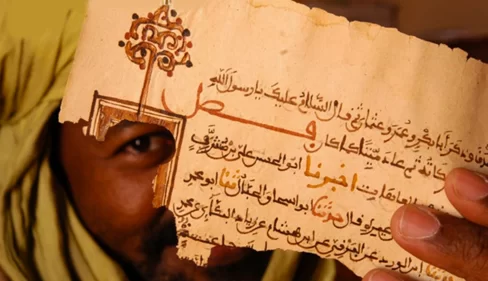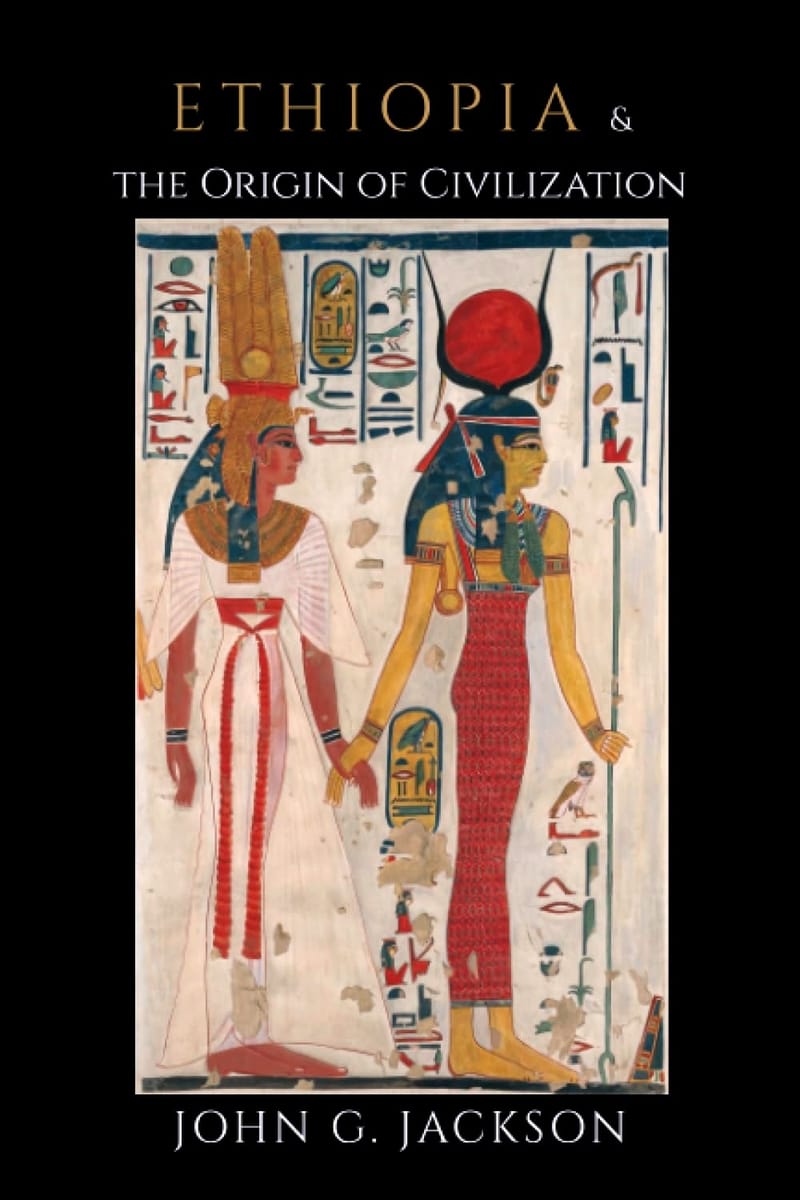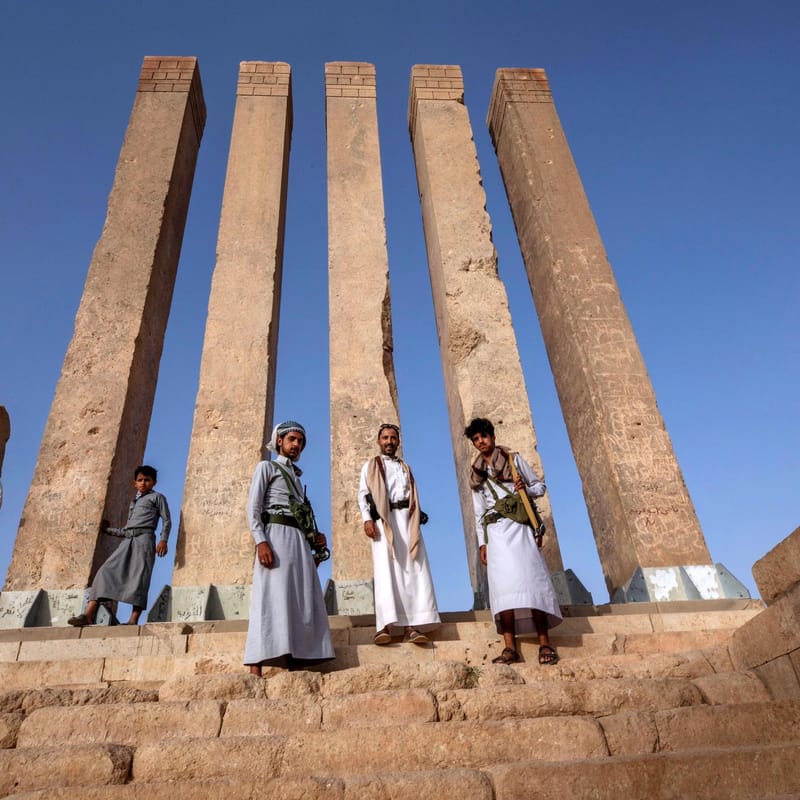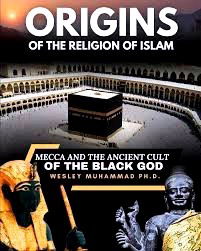Rudolph R. Windsor, From Babylon to Timbuktu: A History of the Ancient Black Races Including the Black Hebrews, 1969
More than six thousand years ago, ancient Mesopotamia had been the cradle of civilization for jet-black people. The ancient Tigris-Euphrates valley had been the land of the original jet-black people. Genesis 10:8 tells us that, Cush was the father of Nimrod. The word “Cush” simply means "dark in complexion" or “Ethiopian”. The Ethiopians are Cushites and sons of Ham. Cush was the father of the Ethiopians. Nimrod was a mighty Ethiopian warrior, ruler of the oldest civilization of the ancient great cities of Babylon, Erech, and Akkad. Nimrod disobeyed God’s order to disperse and repopulate the whole earth right after the Great Flood of Noah. As the first builder of cities, Nimrod wanted to settle and build empires. His rebellion led to a linguistic babel (“babel” means confusion) in the midst of big cities planning. The family scattered in the four corners of the earth. The ancient Ethiopians took the name of the cities they inhabited. Ancient Sumerians (Sumer), Akkadians (Akkad), Babylonians (Babylon), and Chaldeans (Chaldea) were all jet black peoples who brought forth world civilization as we know it today. While the peoples in lower Mesopotamia were called eastern Ethiopians, the southern Ethiopians were called Babylonians. The Sumerian-Ethiopians settled from ancient Mesopotamia to India. The Dravidians were the original black people of India. Cush was the patriarch of all the Ethiopian tribes of Babylon, Arabia, India and on the Nile River. Ancient Ethiopians inhabited Arabia. From the earliest time, the people in Yemen were reputed Ethiopians. Please do not forget that the ancient name of Africa was Ethiopia. Black Arabs and black Hebrews were all part of the same family whose origin is ancient Mesopotamia. The Chaldeans were one of many Cushite tribes. The land of Canaan (Israel) took his name from the youngest son of Ham known as Canaan. The eleven black Hamites tribes (Jebusites, hivites, girgashites, amorites, philistines, Hittites etc…) were the original aborigines Canaanites who later on spread to Africa. The African Jebusites had built the ancient citadel called Jerusalem. The Canaanites are part of the African family of nations. The modern name “Africa” derived from the descendants of Abraham and his wife Keturah. These descendants are Ophren (in Latin Afer -Afar- Apher) and Japhran. Ophren (Afer), Abraham’s grandson led a military expedition against Libya and captured it, renaming it “Apher or Afer” from which came Africa, land of Afer. Sidon is the first-born son of Canaan. Tyre and Sidon, founded around 2300 B.C., became the famous great cultural and commercial cities of their time. The Greeks called the Sidonians “the Phoenicians” (Land of Palm), because their cities were distinctive by many palm trees. However, the Sidonians called their nation by the name of Kenaan (Canaan). Phoenicia, or land of the Sidonians, was located to the north of Palestine, along the Mediterranean. These black Phoenicians were proficient in astronomy, philosophy, geometry, arithmetic and navigation. They navigated to distant lands such as Cyprus, Crete, Rhodes, Sardinia, Spain, Sicily, Carthage, and the Canary Isles. The Phoenicians who established the north African colony of Carthage (the Carthaginians) always considered themselves Canaanites. Phoenicians and Philistines are the black races who first took control of commerce and established colonies on the Mediterranean Sea. “And Mizraim begat Ludim and Anamin, and Lehabim and Naphtuhim and Pathrusim, and Casluhim – out of whom came Philistim (Philistines) and Caphtorim.” When Mizraim begat his children, they dwelled in Egypt, except the Capthrorim and the Philistines who dwelled in the island of Crete and the Mediterranean Sea. The Egyptians are Africans. The first Egyptian was called Mizraim, son of Ham. From ancient time, the black Hebrews referred to Egypt as the Land of Ham. Ancient Palestine was part of the Land of Ham. European civilization came from Africa and Asia through Crete. The mother of the Europeans was a black queen. Greek mythology had shrouded this origin in the Orphic tradition. Persephone was the daughter of Zeus and his mother Rhea, who became Demeter. By Zeus, Persephone became the mother of Dionysus. The Phoenicians spoke a Hamitic-Semitic language so closely allied to the Hebrew. In fact, Hebrew has its origin in the Canaanite language. When Abraham landed in Canaan, he found the Canaanite language so similar to his own that he adopted it with a slight modification. It became known as Hebrew. Hebrew language is simply an African language. In the 9th century, Eldad the Danite, a black Hebrew, arrived in Kairouan in Algeria after his journey through eastern Africa. Karouan was one the famous Talmudic schools of North Africa. Eldad had witnessed the Hebrews in the interior of Africa south of the Sahara speaking a Phoenician-Hebraic language mixed with Arabic. That is the Swahili language. The English alphabet derived from two ancient black nations: the Phoenician-Canaanite alphabet and the Hebrew. The Phoenicians had a powerful navy that made them masters of the sea and commerce. When they traded with the Greeks, the Greeks did not have an alphabet. As a result, they adopted the Phoenician alphabet in order to do business transactions. The Greeks passed this alphabet to the Roman, and the Romans transmitted it to the German Anglo-saxon tribes. Then it was brought to the British Isles. The first two letters of the Phoenician and Hebrew alphabet are “Aleph” and “Bet”. The Black Phoenicians also gave a system of weights and measure to the Europeans. Hamites, Japhet's sons, and Shemites (sons of Shem) were all black. Abraham the father of both the Hebrew-Israelite and Arab nation was a black shemite. The black Hebrew-Israelite of India, Abyssinia, and West Africa consider themselves the original Jews because of the purity of their Israelite blood. From biblical times, black Hebrews carried trade through the Sahara Desert. To this day, we still have survival of primitive Judaism in the Sahel region all the way from the Niger river to Senegal up to the borders of Somaliland or the region called Western Sudan. The ancient black Hebrews migrated up the Nile via Memphis, Elephantine, Karthum, and turned west at Kardofan in central and southern Sudan and Uganda. From Kardofan they travelled to Darfur, Lake Chad, Kano and to the regions of the Niger river (Mali, Niger, Burkina Faso). Za el Yemeni (often spelled Za al Ayaman), is the founder of the First Hebrew Dynasty in western Africa. He was a black Hebrew who arrived in Kuka among the Songhai tribe about 300 A.D. He later on established his capital in Gao in Mali. Gao became the capital of the ancient Ghana empire. The ancient black African Hebrews established the first empires that are still striving throughout West Africa and the Sahara region today. They came into Western Sudan from northern and eastern Africa as a result of a chain of commercial and persecutory migrations. After 300 A.D., the visible impact the black Hebrews brought in the region could be expressed by a higher social organization, cultural educational, legal, and moral standards of living, and a high technological imprint via the erection of the first public buildings, and the advancement of agriculture. Kumbi was one of the ancient cities of Hebrews. The ancient Hebrew kingdom of Ghana had kings, princes, governors, generals, secretaries, treasurers, revenue agents, judges, architects, engineers, doctors, historians, language interpreters, mathematicians, painters of art, goldsmiths, etc… All the black Hebrew kings of ancient Ghana professed the Hebrew religion and had two titles: Kayamaga, meaning “Master of gold”, and the title of Ghana as “War Chief”. By 790 A.D., forty-four Hebrew kings reigned in ancient Ghana. How do we account for the Hebrew-Israelite journey to Africa? From king Solomon’s time, the rulers on both sides of the Red Sea, namely Abyssinia (Ethiopia) and Yemen were ruled by ancient Hebrew kings. They had the title of “Bar Negash” or “Sea Kings”. King Solomon had a son with the queen of Sheba. The royal child was Menilek and he received his education in Jerusalem. When Menilek returned to Ethiopia, king Solomon sent priests and royal officials alongside his son to govern the Ethiopian vast territories. The first organized Jewish colony in Ethiopia dates back to the 10th century B.C. The Queen of Sheba and her son Menelik transferred their capital from Sheba to Ethiopia. Aksum became a prominent Jewish State. The religious center hosted the Ark of the Covenant brought from Jerusalem by Menelik. Ethiopia and southern Arabia were included in one empire. Axum and Sudan were two Hebrew-Israelite civilizations, with Napata and the industrial city of Meroe as capitals. There was much commercial rivalry between Saba (Sheba), Himyar, Habesh and Aksum that resulted in many wars. Kings and inhabitants of these lands were Jewish. From the first to the fifth century, Judaism was politically powerful in Arabia because of trade monopoly. There were many Jewish kings such as Abu Kariba, Masruk, and Dhu Nuwas the king of Yemen. By the sixth century A.D., we witness to the Golden Age of the Black Jews in Yemen. This Jewish power had reached its climax in Yathrib, later called Medina. As far as West Africa is concerned, we must wait the beginning of the 11th century to witness increasing conversions to Islam. The king of Songhai (Ghana) was persuaded to convert to Islam by the merchants of Gao, who had become wealthy and economically powerful. The king of Gao, Za Kasi, embraced Islam in the year 1010, followed by the king of Kanem-Bornu in 1086. These are tactical conversions because the kings were motivated by commercial convenience, and they kept secret and private the practice of Judaism. In 1464, the sixteenth Islamic-Hebrew king, Sonni Ali the liberator, took leadership in Gao and began to build an empire. He built an organized standing professional army, including a navy on the Niger. By the time of the Prophet Zephaniah about 630 B.C., Uganda, Kenya and Ethiopia were swarming with black Jews. In Ethiopia we have the Kamant Jews, the “Bet Israel” (House of Israel) communities, also called Falashas, meaning immigrants. Uganda had a tradition of thirty-three kings and a legendary line tracing back to King David. We find the Zafin Ibrahim (descendants of Abraham) the black Jews established in Madagascar. By the second century, Jews had migrated to whole of North Africa, such as Morocco, Tunisia, Libya, Mauritania, and Algeria. Libya had over one million black Jews especially the city of Cyrene becoming a stronghold of Jews.
- Category: Reading Bar Café




